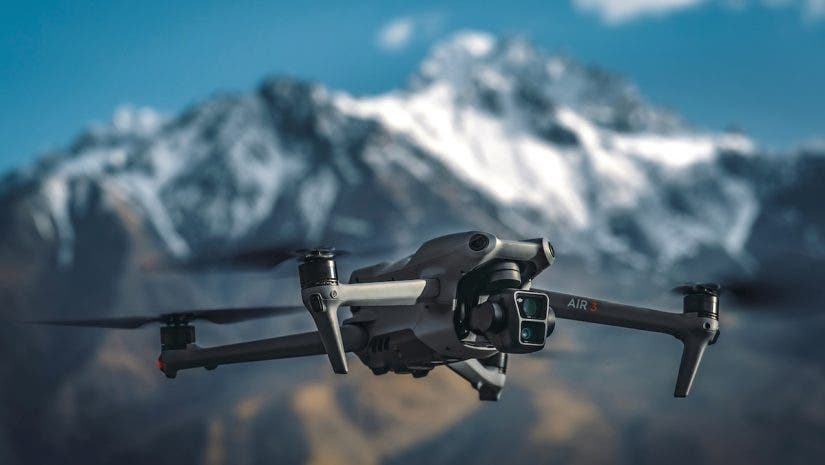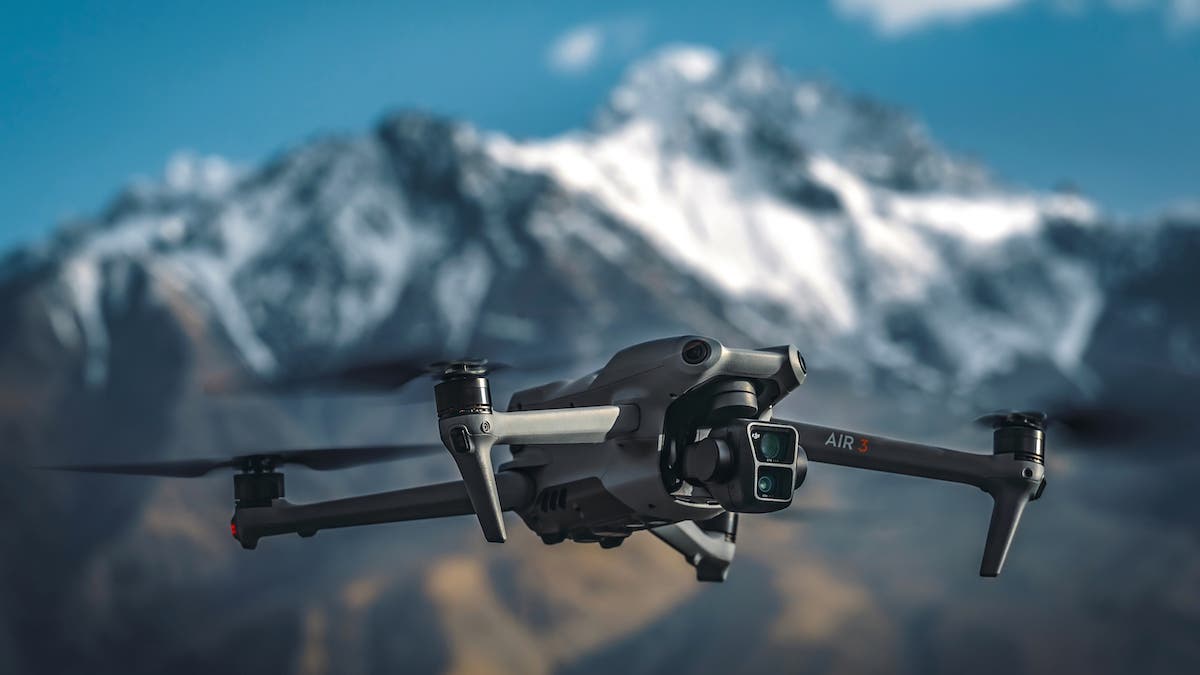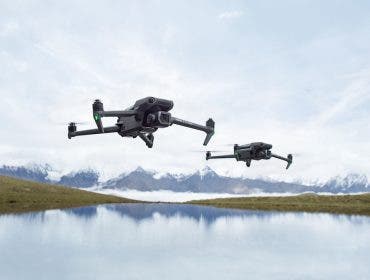DJI has just announced the newest addition to the Air Series, the DJI Air 3 Drone. This compact, foldable drone has two powerful cameras that capture 4k 60fps video and 48MP stills. Featuring a 24mm wide-angle camera and 3x 70mm medium-tele camera, capturing different perspectives has never been more possible for this series of drones. Fly confident and safely with up to 46 minutes of flight time and omnidirectional obstacle sensing that ensures maximum creativity.
Key Features of the DJI Air 3
- 24mm 1/1.3-inch-CMOS wide-angle camera
- 70mm 1/1.3-inch-CMOS 3x medium tele camera
- Up to 46 minutes of flight time
- Omnidirectional obstacle sensing
- Up to 4K at 60fps with dual camera
- Up to 48MP photos with dual camera
- New O4 video transmission
- Advanced smart Return Home
- 2.7K vertical shooting
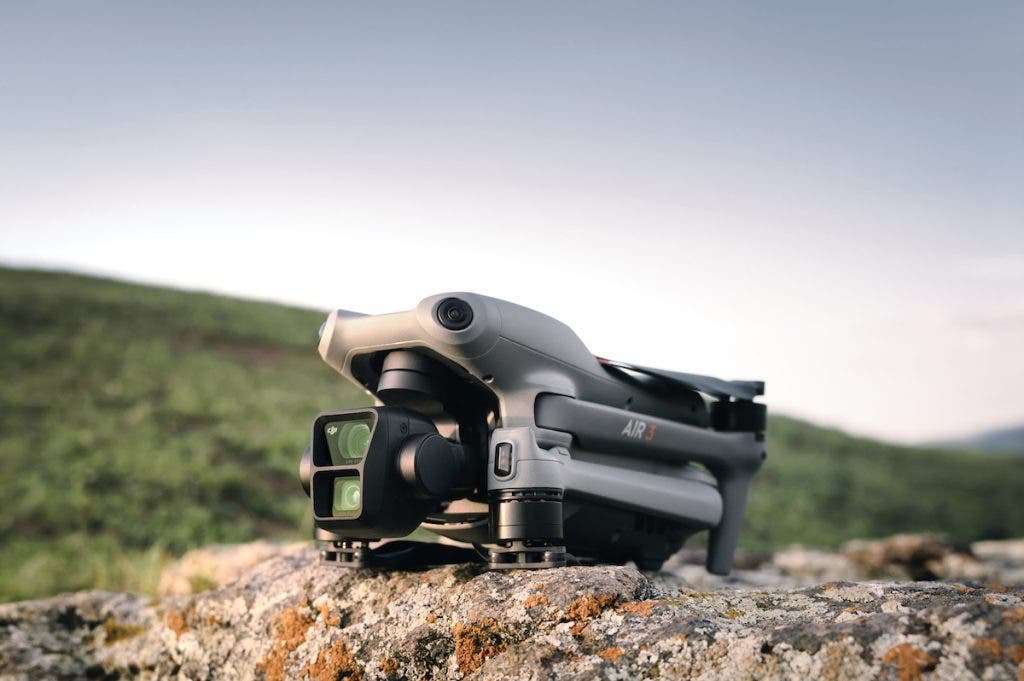
What’s New About the DJI Air 3 Drone?
Dual-Camera System
This drone is the first in the DJI Air Series to offer two cameras to its users — a 24mm wide-angle CMOS camera with f/1.7 aperture and a 70mm 3x medium tele camera with f/2.8 aperture. Both cameras deliver 48MP photos that showcase great detail and allow you to easily crop without losing information.
The Air 3’s 1/1.3 inch CMOS sensor supports dual native ISO in 4k 60fps HDR video without cropping. This ensures that footage from either camera showcases natural color and accurate lighting results. It also has a maximum video spec of 4k at 100fps. Both cameras also support 10-bit D-Log M and 10-bit D-Log HLG color modes. This retains every piece of information needed when color grading your footage and giving it a higher dynamic range.
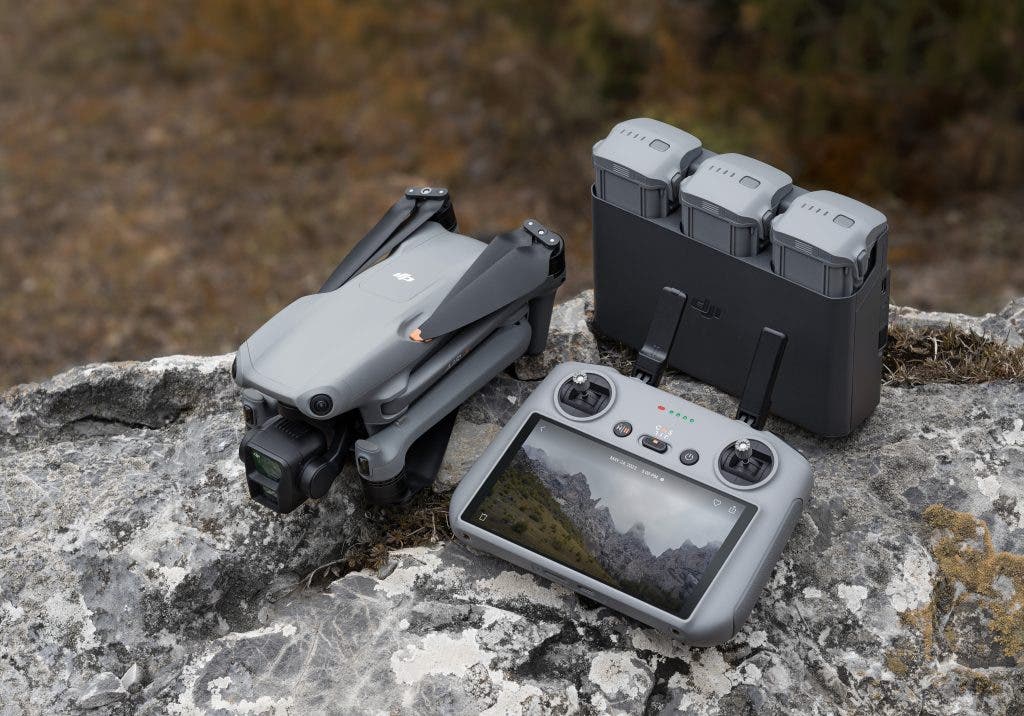
New Battery
The Air 3 offers up to 46 minutes of flight time, a significant increase compared to the DJI Air 2s Drone. The new battery charging hub supports a power transfer function. This means you can transfer battery life from multiple batteries to the battery with the highest remaining power. This gives you a quick charge solution in fast-paced shooting environments.
04 Transmission System
This is the first DJI Air drone to feature the 04 video transmission system, which empowers the drone with enhanced transmission performance and a maximum range of 20 km with increased stability and a 1080p/60fps maximum quality live feed to ensure you get every shot.
The drone’s new remote, the DJI RC 2 Controller, has a built-in 5.5 inch FHD screen and uses the new 04 video transmission system for seamless and safe flying.
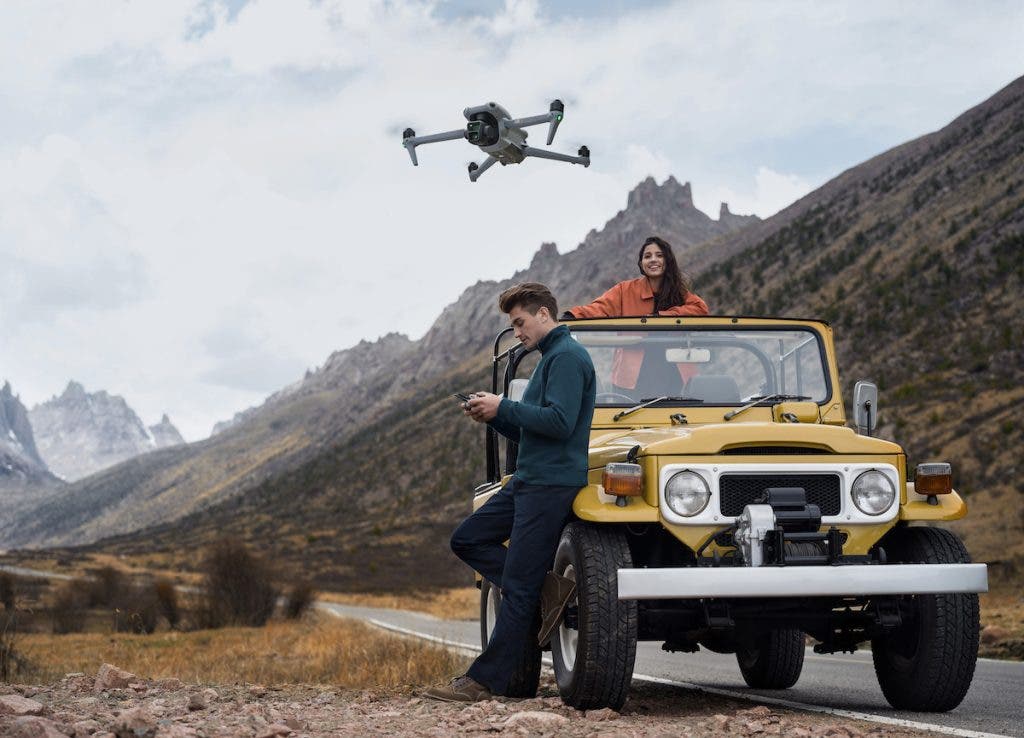
Omnidirectional Obstacle Sensing
Flying safely is important, and the DJI omnidirectional system enables comprehensive environmental awareness. It allows the Air 3 to detect obstacles in every and all directions. When an obstacle is detected, the Air 3 can use APAS 5.0 to perform smoother avoidance movements, keeping your drone even safer. This allows beginner drone pilots to use their drone with confidence and safety in mind.
Smart RTH will automatically plan an optimized flight route for the Air 3 to return to its home point quickly and safely, while maintaining omnidirectional obstacle sensing.
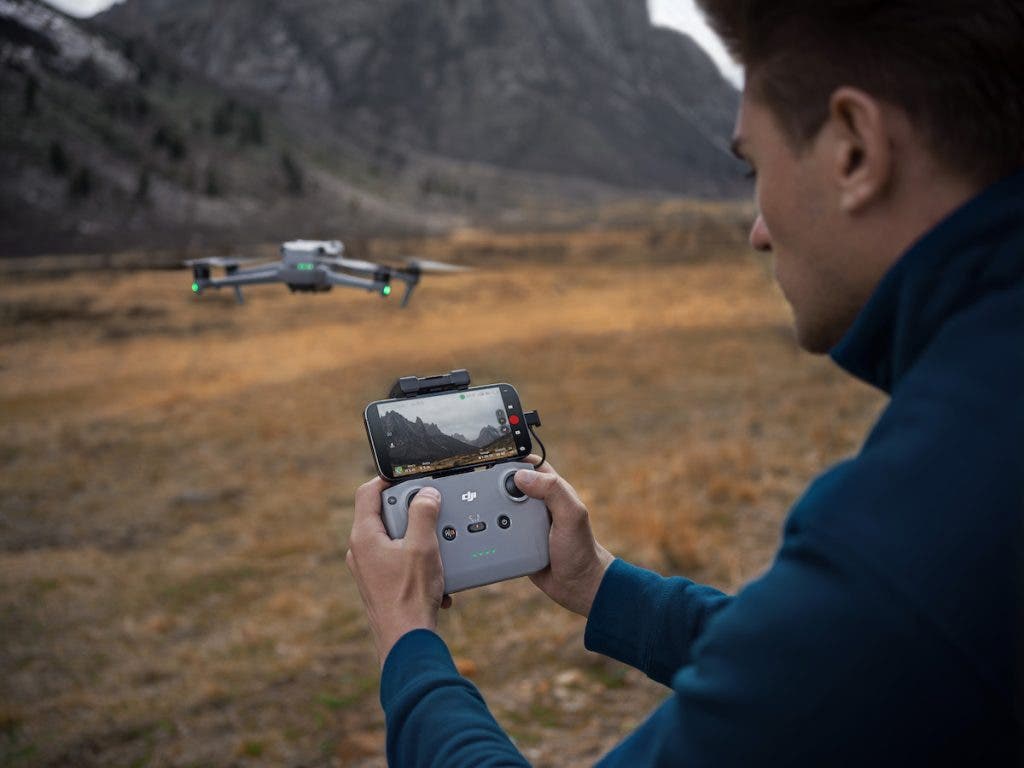
2.7K Vertical Video
The Air 3 supports 2.7K vertical video shooting with both of its cameras. The vertical shot output goes directly from the 4:3 CMOS sensor and delivers clips that are optimized for smartphone and social media app viewing. They can be processed vertically for immediate sharing capabilities.
MasterShots allows the DJI Air 3 to automatically perform camera movements, shooting multiple clips, and then editing them with music, specific cuts, and even effects for fast-editing on the go.
Who Should Buy the DJI Air 3 Drone?
The Air 2s was the perfect tool for creators on the go who needed a compact drone with 4K video options. The Air 3 is an explosive upgrade to its predecessor and travel creators are likely to be the main target demographic.
Though it is perfect for travel content creators, it should be said that this drone isn’t just for professional level creators. The drone can be used by enthusiasts looking to explore new heights and take their own content to the next level.
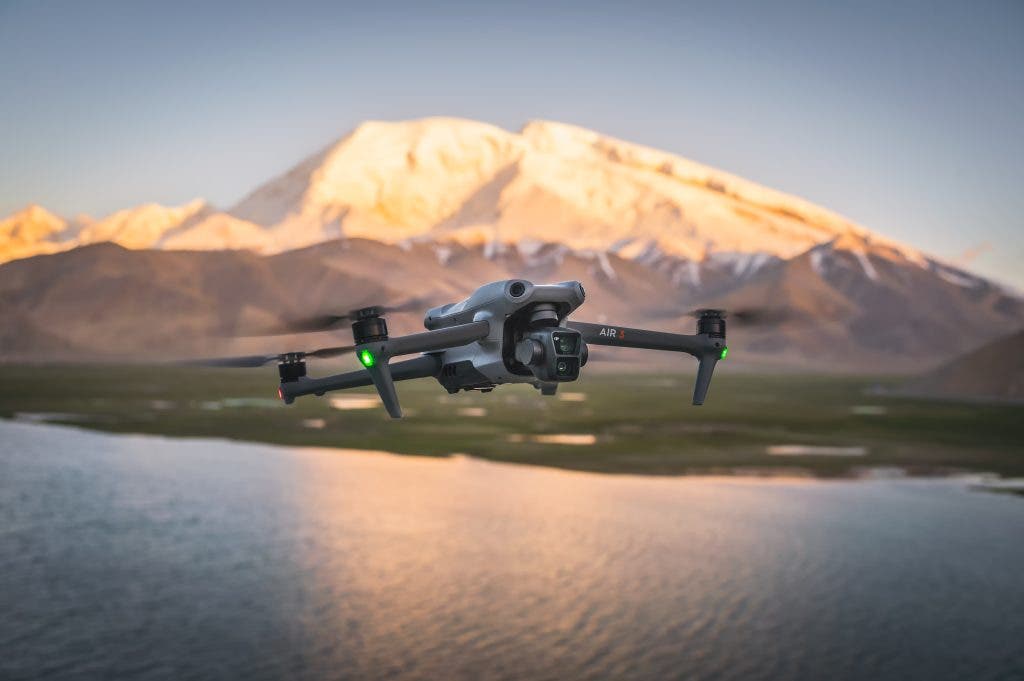
Comparable Drones from DJI
DJI Air 2s
The Mavic Air 2s Drone has a smaller sensor compared to the new Air 3, which may sacrifice quality when it comes to stills. Although, it can still record in 4K 60fps.
DJI Mavic 3 Pro
The newest release in the Mavic series before the Air 3, the Mavic 3 Pro offers incredible technology and quickly rose to dominance after its release. With its 4/3 sensor and three different camera options, it has become the go-to for professional creators who want the highest quality compact drone.
DJI Mavic 3 Classic
The Mavic 3 Classic offers a more affordable version of the Mavic 3 Pro without sacrificing too much technology. The Mavic 3 Classic also offers 46 minutes of flight time and a 4/3 CMOS sensor, making it great for professional-level creators.
Conclusion
As a current Mavic Air 2s user, this drone couldn’t excite me more. The main concern with the Air 2s was transmission issues as well as battery life, which both get upgrades in the DJI Air 3. The dual-camera system makes this even more attractive as it offers those iconic perspectives that the Mavic 3 series offers, but at a more affordable price. The DJI Air 3 Drone is perfect for on-the-go creators who want a compact drone with professional-level technology.
